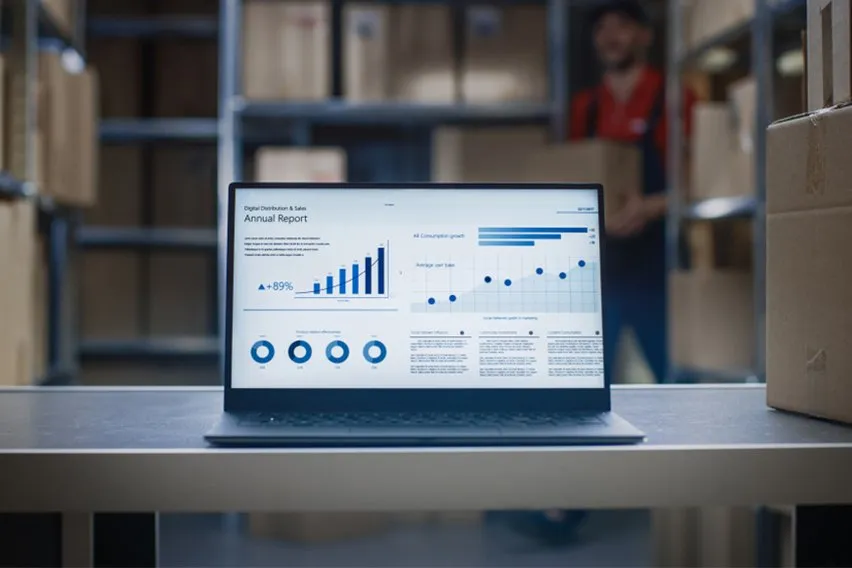How to Perform Inventory Analysis: Methods, Tips & KPIs

Inventory is an important aspect of any business. It’s one of the key factors that keep your company profitable – as long as you can keep up with customer demand.
This means that making sure you have a clear picture of your inventory is vital.
To do this, you’ll need to perform regular inventory analysis checks.
But what is inventory analysis and how do you perform one?
Let’s take a closer look.
Here’s What We’ll Cover:
What Is Inventory Analysis?
Inventory analysis is the process of allowing a business to understand its inventory levels.
The aim of an inventory analysis is to improve cash flow, reduce stockouts and make every aspect of your operations more efficient.
Performing a regular and detailed inventory analysis is key. It means that you can focus on the front-facing aspects of your business instead of worrying about your inventory and stock.
It’s also a great way to spot any trends and helps you to calculate your future orders based on customer demand.

How Do You Analyze Inventory?
When analyzing inventory, businesses tend to use various financial ratios. These help to judge whether the company has any issues with producing or selling its inventory.
There are a number of methods that you can use to analyze your inventory. We will focus on the two that stand out amongst the rest as the best and most popular.
ABC Analysis
ABC analysis is perhaps the most popular analysis method.
ABC, or Always Better Control, aims to bring simplicity to your inventory by putting everything into three categories.
- A-Inventory: Your highest value stock.
- B-Inventory: Stock that sells regularly but doesn’t hold the same value as A.
- C-Inventory: Inventory that doesn’t sell much and generates the least revenue.
ABC allows you to separate and prioritize your most valuable stock. This means that you can take the necessary steps to boost your profits and control your costs.
It also allows you to identify your poor-performing or obsolete stock. This means that you can optimize your inventory turnover rate and forecast future customer demand.
VED Analysis
VED analysis measures how valuable your inventory is and takes demand more into consideration.
It’s a method that is geared towards manufacturing companies with a large inventory of different types of stock.
It differs from ABC as it only takes into account how necessary an item is for your business.
VED can be broken down into three categories:
- Vital: Inventory that must be in stock.
- Essential: Important stock, but you can operate with a minimum amount.
- Desirable: These are optional items that can be considered profitable but non-vital.
The VED analysis is great for figuring out your customer demand and regulating your stock based on demand and how critical it is for an item to be in stock.
Key Performance Indicators
Key performance indicators, or KPIs, are ways to measure and monitor your business.
These can be broken down into 5 common categories:
1. Inventory Turnover
The number of times your inventory is sold and replaced.
2. Average Days to Sell
How long it takes your business to buy or create inventory, and then sell it for a profit.
3. Average Inventory
This shows how fast inventory is selling.
4. Inventory Write-Off
Inventory that no longer holds value often leads to inventory write off. This could include outdated or damaged inventory.
5. Holding Costs
Your holdings costs are any costs incurred in storing and maintaining your inventory.
When performing an inventory analysis, taking note of your KPIs allows you to easily extract key data that can help optimize your process.
Key Takeaways
In order to run a profitable business, performing regular inventory analysis’ are vital.
Businesses can lose a lot of money by holding unwanted stock and not keeping stock levels optimal.
By analyzing your inventory, you can highlight key items and regulate their levels to keep up with customer demand.
Therefore finding a way to manage and analyze your inventory efficiently is key.
Are you looking for more business advice on everything from starting a new business to new business practices?

Then check out the FreshBooks Resource Hub.
RELATED ARTICLES


 What Is AVS Check (Address Verification Service)?
What Is AVS Check (Address Verification Service)? Small Business Owners: 1099 Rules for Employers
Small Business Owners: 1099 Rules for Employers How to Change a Business Name: 12 Steps
How to Change a Business Name: 12 Steps What Are Sales Receipts?
What Are Sales Receipts? 4 Types of Inventory to Know About
4 Types of Inventory to Know About What Is SCA? (Strong Customer Authentication)?
What Is SCA? (Strong Customer Authentication)?